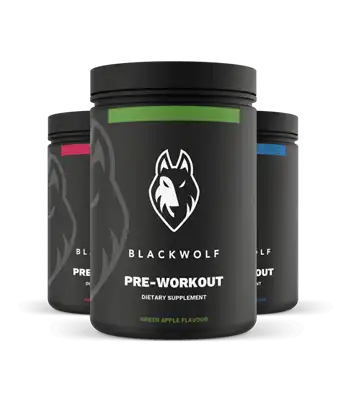Introduction
A strong well-developed back and biceps are essential for general fitness and appearance. These muscle groups are crucial for many daily activities and workouts, allowing you to lift, pull, and perform different actions with better ease and strength.
According to Eur J Sport Sci[1], working on your back and biceps not only improves your athletic abilities, but also leads to better posture, a lower risk of injury, and a more muscular appearance.
Strengthening your back muscles is critical for maintaining a strong and supportive core, enhancing spinal stability, and promoting efficient movements. Meanwhile, well-developed biceps help to increase arm strength, which is useful for everything from carrying groceries to doing exercises like pull-ups and rowing.
Key Takeaways
- Focus on developing the back and biceps for enhanced strength, better posture, and improved appearance.
- Key exercises include pull-ups, barbell rows, deadlifts, lat pulldowns, and various curls.
- Begin with a warm-up to prevent injuries and prepare the body for exercise.
- Employ a mix of compound and isolation exercises [2] for comprehensive muscle development.
- Beginners should start with a full-body routine, while more advanced individuals can transition to a split routine.
- Progress gradually by increasing weight and incorporating advanced techniques.
- Pay attention to form and safety to avoid injuries.
- Consistency, proper technique, and a strategic workout program are crucial for achieving desired results.
Anatomy of the Biceps and Back Workout
Back Muscles:
The back comprises numerous major muscle groups, including the latissimus dorsi (lats), rhomboids, and trapezius. The lats are big, flat muscles that span the middle and lower back and play an important role in pulling and rowing.
The rhomboids are located between the shoulder blades and help with shoulder retraction and posture. The traps, which form a diamond shape across the upper back, control shoulder [3] and best arm mobility and stabilize the shoulder girdle.
Bicep Muscles:
The biceps brachii [4], sometimes known as the biceps, is a two-headed muscle found on the front of the upper arm. Its primary function is to flex the elbow and rotate the forearm. Well-developed biceps not only improve arm strength but also contribute to a more appealing physique.
Pre-Workout Preparation
Before beginning any strenuous physical activity, it is critical to adequately warm up your muscles to limit the chance of injury and prepare your body for the next effort. A proper warm-up boosts blood flow, muscle warmth, and flexibility, ensuring that your muscles are prepared to function efficiently and safely.
Some recommended warm-up exercises include light cardio (such as jogging or cycling workout), dynamic stretching, and particular warm-up sets with lesser weights for the exercises you intend to do. Incorporating foam rolling or self-myofascial release techniques can also help relieve muscle tension and improve mobility.
Core Back and Biceps Exercises
Pull-Ups
Mastering the pull-up is a true test of upper-body strength and a good way to create a strong back and biceps.
Pull Up | 3 GOLDEN RULES!(Video Credit: ScottHermanFitness YouTube Channel)
How to do: To do a correct pull-up, use an overhand, shoulder-width grip (palms facing away). Hang from the bar with your arms fully extended, engage your core, and lift yourself until your chin is above the bar. Variations such as the wide-grip pull-up emphasize the lats, whereas the close-grip pull-up targets the biceps. Pull-ups are a complex exercise that targets the lats, biceps, forearms, and core.
Reps: Aim for 3-4 sets of 6-12 reps. Beginners can start with fewer reps or assisted pull-ups.
Rest: Rest for 1-2 minutes between sets to allow for sufficient muscle recovery.
Barbell Rows
The barbell row is an essential exercise for building a thick, muscular back.
Bent-Over Barbell Row (Video Credit: Moorefitcoach YouTube Channel)
How to do: Maintain a flat back, hinge at the hips, and hold the barbell with an overhand, shoulder-width grip. Row the weight directly up towards your lower belly, pulling your shoulder blades together at the apex of the exercise. Avoid using momentum or swinging a weight. Barbell rows focus largely on the lats, traps, and biceps.
Reps: Perform 3-4 sets of 8-12 reps. Adjust the weight to maintain proper form throughout all sets.
Rest: Take a rest of 1-2 minutes between sets, focusing on muscle relaxation and breathing.
Deadlifts
The deadlift is a compound exercise that works many muscle groups, such as the back, legs, and core.
The Proper Way to Perform the Conventional Deadlift (Part I)(Video Credit: Mind Pump TV YouTube Channel)
How to perform: To do it correctly, stand with your feet hip-width apart, lean over, and hold the barbell with an overhand grip. Keep your back flat and press through your heels to lift the weight off the ground, working your back muscles and hamstrings. Deadlifts strengthen the back while also increasing overall body strength and power.
Reps: Due to the intensity, 3-5 sets of 4-6 reps are ideal. Use a challenging but manageable weight.
Rest: Allow for a longer rest period of 2-3 minutes between sets to recover strength.
Lat Pulldowns
The lat pulldown is a machine workout that targets the back muscles, namely the lats.
How to do Lat Pulldown | 3 GOLDEN RULES(Video Credit: Scott Herman Fitness YouTube Channel)
Set up by adjusting the knee pad and grip width to your specific body size. Sit tall with your chest up, grab the bar with an overhand, shoulder-width hold, and bring it down towards your upper chest while pressing your shoulder blades together. Concentrate on controlled movements and complete range of motion. Variations such as the close-grip pulldown can specifically target the biceps.
Reps: Complete 3-4 sets of 8-12 reps. Ensure full range of motion and control.
Rest: Rest for 1-2 minutes between sets, maintaining focus on technique.
Bicep Curls
Bicep curls are vital for developing strong, muscled arms.
How to do Bicep Curls (Video Credit: Fit Father Project – Fitness YouTube Channel)
How to do: They can be done using a barbell, adjustable dumbbells, or cables. To perform barbell curls, stand with your feet shoulder-width apart, grab the barbell with your underhand, and curl the weight up towards your shoulders while keeping your elbows immovable. Dumbbell curls allow for autonomous arm movement, whereas cable curls maintain consistent tension. Proper form, controlled motions, and a broad range of motion are critical for optimal efficacy.
Reps: Aim for 3-4 sets of 10-15 reps. The weight should allow the completion of all reps with good form.
Rest: Short rests of about 1 minute between sets are sufficient as bicep muscles recover quickly.
Hammer Curls
Hammer curls vary from ordinary bicep curls in that you hold the weight with a neutral grip (palms facing inward).
Hammer Curls With Dumbbells(Video Credit: Fit Father Project Fitness YouTube Channel)
How to do: This variation focuses on the brachioradialis (forearm muscle) and the outer head of the biceps. Hammer curls can be done with dumbbells or cables and follow the same basic curling motion as traditional bicep curls. They are an excellent addition to any arm workout, promoting well-rounded biceps and forearm strength.
Reps: Execute 3-4 sets of 10-15 reps. Keep the movement controlled and deliberate.
Rest: Rest for about 1 minute between sets. Ensure you’re not using momentum to lift the weights.
Advanced Combination Moves
Chin-Ups with a Bicep Focus
Get BIG Biceps By Doing Chin-Ups! (Video Credit: Mind Pump TV YouTube Channel)
Chin-ups with a Bicep Focus are an advanced form that emphasizes the biceps muscles. To do this exercise, hold the pull-up bar with an underhand (supinated) grip. As you raise yourself, concentrate on squeezing your biceps firmly. Lift your body until your chin clears the bar, then carefully lower yourself down to the starting position with control. This exercise stresses the biceps more than a standard chin-up.
Reps: Aim for 3-4 sets of 6-10 reps. This exercise can be challenging due to the emphasis on the biceps, so adjust the reps accordingly.
Rest: Rest for 1-2 minutes between sets to allow for adequate recovery of the biceps and upper back muscles.
T-Bar Rows
How To T-Bar Row The Right Way!(Video Credit: Mind Pump Tv YouTube Channel)
T-bar rows are another terrific back and biceps exercise. Set up a landmine attachment or position one end of a barbell in a corner. Use an overhand grip on the other end of the barbell. Hinge at the hips, keeping your back flat and your core strong. Row the weight directly towards your body, tightening your back muscles at the finish of the exercise. T-bar rows offer a wider range of motion and back contraction than regular barbell rows.
Reps: Perform 3-4 sets of 8-12 reps. Choose a weight that challenges you while maintaining proper form throughout the this barbell exercise.
Rest: Take a rest period of 1-2 minutes between sets to recover and prepare for the next set.
Incline Dumbbell Curls
Incline Dumbbell Curl Tutorial For Sleeve Busting Arms (Video Credit:
Fit Father Project YouTube Channel)
Incline Dumbbell Curls are an excellent technique to work the biceps from a different angle. Adjust a bench to an incline of 30-45 degrees. Lie back on the bench, gripping a dumbbell in each hand using an underhand grip. Keep your upper arms still and curl the weights up to your shoulders, squeezing your biceps at the apex of the exercise. The inclination position increases the stretch on the biceps, resulting in higher muscle activation.
Reps: Complete 3-4 sets of 10-15 reps. The incline position increases the stretch on the biceps, so choose a weight that allows you to complete all reps with controlled movements.
Rest: Rest for about 1 minute between sets to maintain intensity and muscle engagement.
Workout Routines
For Beginners:
- Start with a full-body routine 2-3 times per week
- Include compound exercises like deadlifts, rows, and pull-ups
- Perform 2-3 sets of 8-12 reps for each exercise
- Focus on mastering proper form and gradually increasing weight
Progression Tips:
- As you gain strength, transition to a split routine (e.g., back/biceps, chest/triceps, legs)
- Increase the weight and/or reps gradually
- Add advanced combination moves like those mentioned above
- Consider incorporating drop sets or forced reps to increase the intensity
Benefits of Combining Back and Biceps Workout
Stronger Back, Happier Body:
Back and bicep exercises work together to create a well-balanced upper body. This can help improve your posture, reduce aches and pains, and keep your joints healthy – all leading to a happier, more comfortable you!
Everyday Superhero:
Imagine lifting boxes, carrying groceries, or playing with your kids with ease! A strong back and biceps make daily tasks feel effortless and can even improve your performance in other sports and activities.
Confidence Booster:
Who doesn’t love a well-fitting shirt? Combining back and bicep exercises can help you fill out your clothes for a more toned and defined upper body. Plus, a strong back creates that impressive V-shape physique, making you look and feel more confident.
Posture Perfection:
Ever feel hunched over? Weak extrinsic back muscles [5] can contribute to bad posture. Back and bicep exercises strengthen these muscles, pulling your shoulders back and promoting better posture, which not only looks good but also feels great!
Gym Gains Multiplier:
Think stronger deadlifts, heavier overhead presses [6] – a strong back and biceps create a solid foundation for many other exercises. By training them together, you can improve your overall gym performance and see faster results.
Why Train Back and Biceps Workouts Together?
While there are many workout plans, combining back and bicep exercises offers a smart strategy. The reason? These muscle groups naturally work together.
Exercises like pull-ups or rows engage your biceps while strengthening your back. As these exercises target both the areas, it makes sense to train them in the same session.
This efficient approach saves you time and allows you to focus on other muscle groups during separate workouts. Remember, bicep exercises often target just the biceps, while best back exercises work multiple muscles. To maximize your workout, train your larger back muscles first, then finish with targeted bicep exercises.
How Many Sets & Reps Back and Biceps Workouts Should I Do?
The sample workout provided offers a general guideline for sets and repetitions, but you might wonder why we chose those numbers and how to adjust them for your own goals. Here’s a simplified breakdown:
Building Muscle (Hypertrophy): Aim for higher repetitions (12-20 reps) with a lighter weight. This approach, supported by research[7], helps create muscle growth.
Building Strength: Focus on fewer repetitions (1-5 reps) with a heavier weight. This challenges your muscles and leads to strength gains[8], especially when you gradually increase the weight lifted (progressive overload).
Remember, only the sets where you challenge yourself count! Before diving into heavy weights, warm up with lighter sets or light cardio to prepare your body.
Safety Tips and Injury Prevention
Common mistakes that can result in injury include lifting too much weight and losing form, rounding the back during exercises like rows and deadlifts, swinging or using momentum instead of regulated movements, and skipping warm-up and cool-down regimens.
To avoid injuries, keep your spine in a neutral position and activate your core during the workouts. Methodically move the weights, avoiding jerky or swinging movements. Use the entire range of motion, but don’t sacrifice form for depth. Listen to your body and change the weights or exercises as needed.
Nutrition and Supplements for Optimal Biceps and Back Growth
For muscle growth, “a balanced diet rich in protein is essential—aim for 1.6 to 2.2 grams of protein per kilogram of body weight daily,” says Andrew White, NASM-Certified Personal Trainer. Supplements like whey protein, creatine, and BCAAs can enhance muscle recovery and growth. Remember, consistency in both diet and training is important for optimal results.
 Back And Bicep Workout: Final Verdict
Back And Bicep Workout: Final Verdict
To create a strong and muscular back as well as well-developed biceps, you must be dedicated, use good technique, and take a strategic approach to exercise selection and programming. The workouts in this program, which include pull-ups, rows, deadlifts, lat pulldowns, and numerous curl variations, give a solid foundation for targeted back and bicep growth.
Remember to track your progress, steadily raise the intensity, and stick to your workout regimen. Celebrate tiny triumphs along the road, and enjoy the journey to building a muscular and attractive physique.
Frequently Asked Questions (FAQs)
Q. What are good Back And Bicep workouts?
- Try pairing exercises like rows and pull-ups (back) with bicep curls for a well-rounded workout that hits both muscle groups!
- Consider compound exercises that work both back and biceps together, like dumbbell rows or chin-ups, to save time and build strength.
- Don’t forget isolation exercises like bicep curls to ensure your biceps get targeted attention for sculpting and definition.








